Australian Tropical Rainforest Plants - Online edition
Austrosteenisia blackii F.Muell.) Geesink
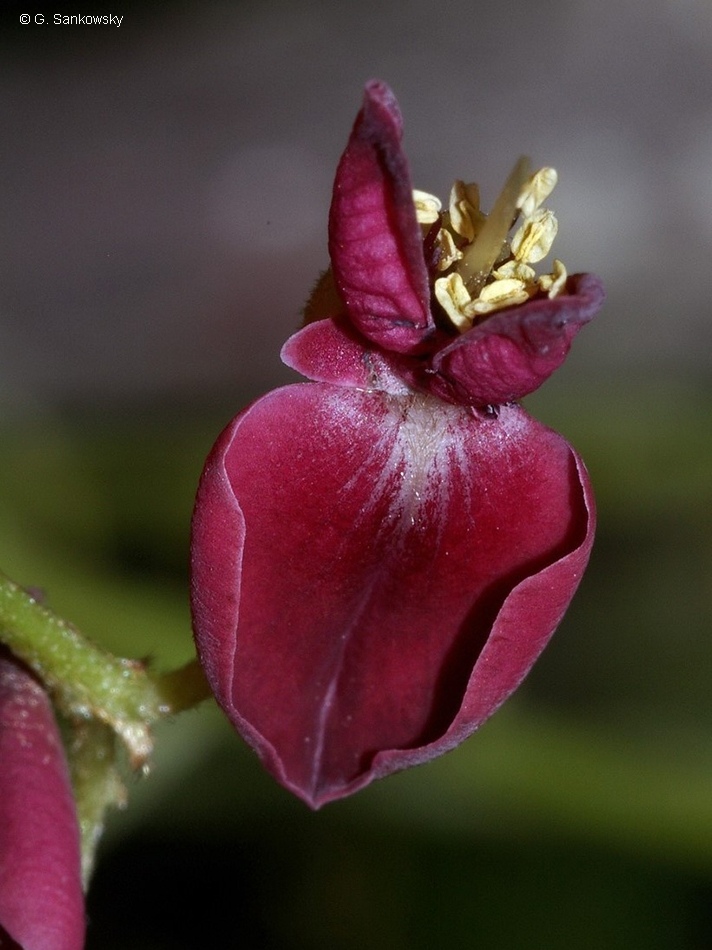
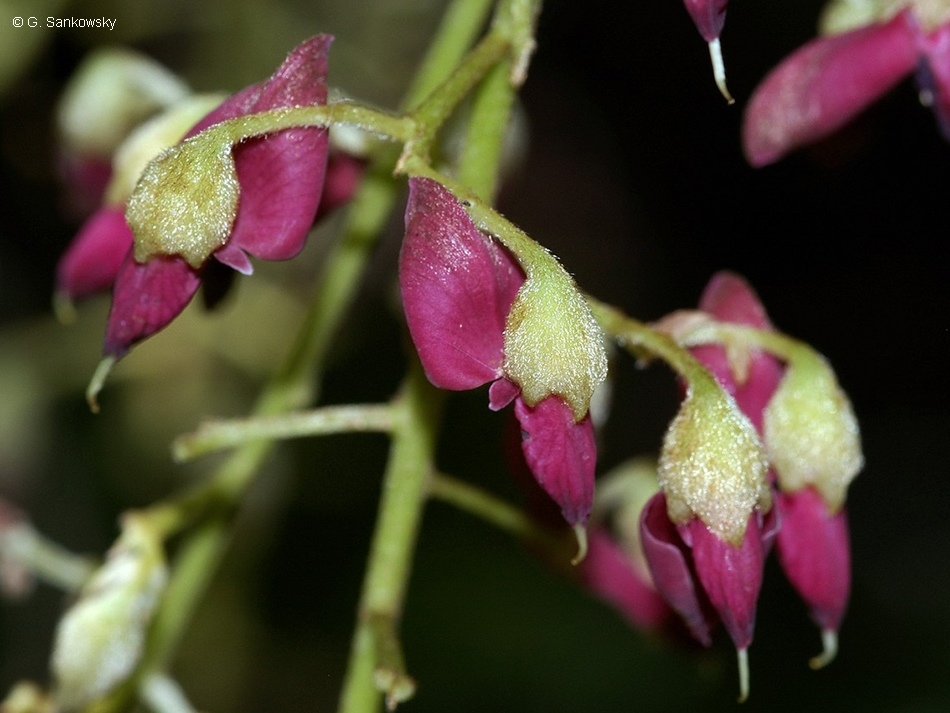


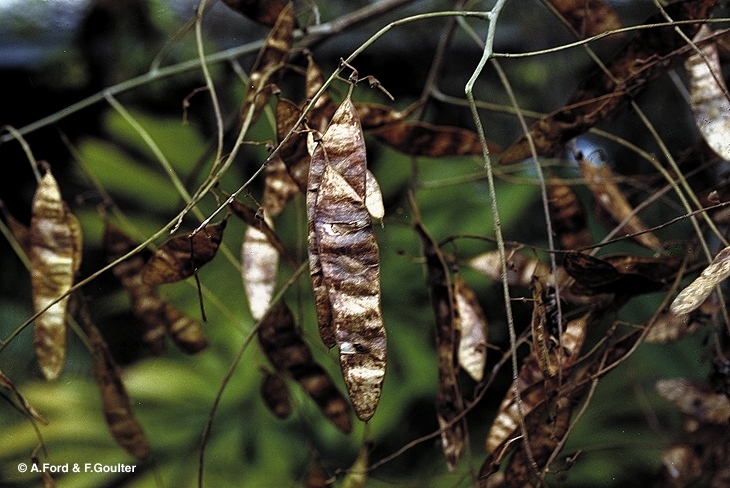
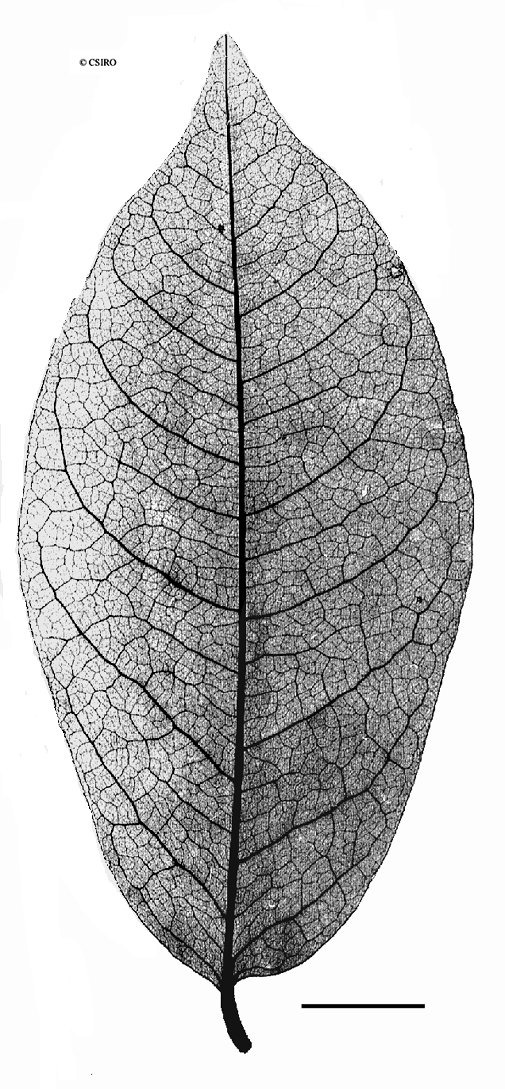

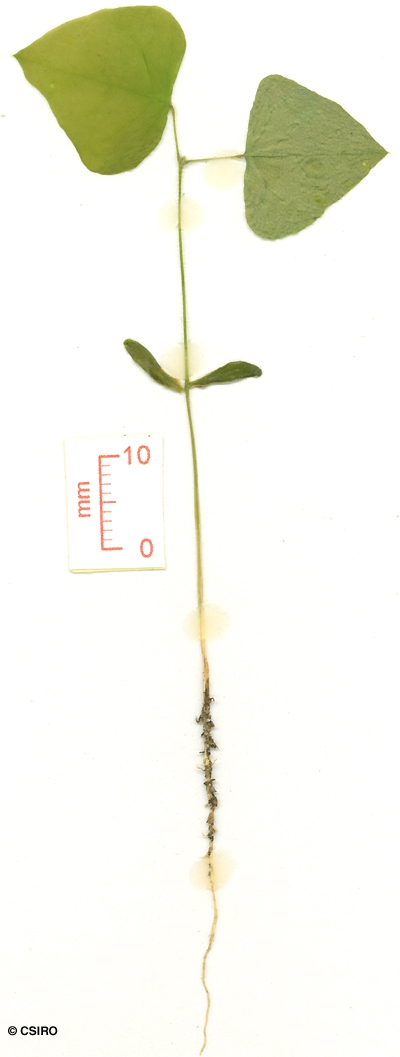
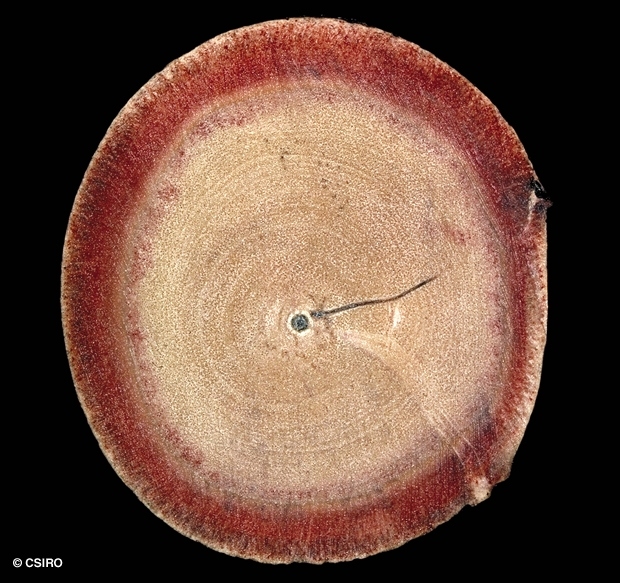
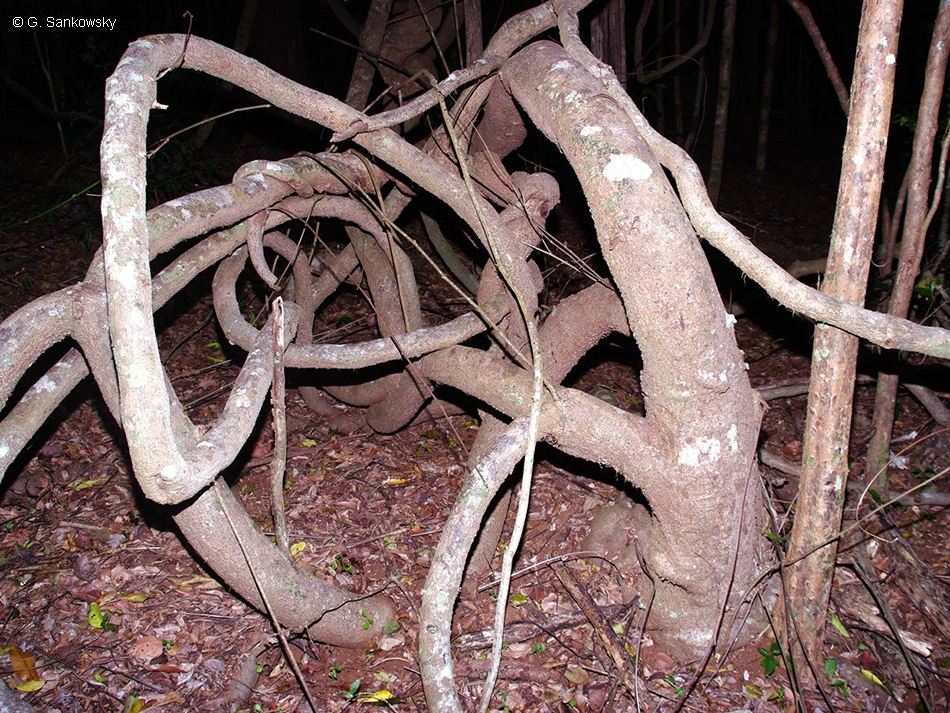
Geesink, R. (1984) Leiden Botanical Series 8: 78.
Blood Vine; Vine, Blood
Leaflet blades about 4-11 x 1.5-4.5 cm, lateral leaflet stalks about 0.3-0.7 cm long. Usually 7-9 leaflets in each compound leaf. Underside of the leaflet blade clothed in short pale +/- prostrate hairs. Stipular scars difficult to discern, stipules hairy, about 3 mm long. 'Stalk' of the terminal leaflet much longer than those of the lateral leaflets. Pulvinus present on the terminal leaflet stalk but not on the lateral leaflet stalks.
Plants usually flower when partly deciduous. Flowers borne in inflorescences consisting of large numbers of raceme-like structures with pairs of flowers on a common peduncle about 5-6 mm long, pedicels about 3-4 mm long. Flowers about 7-9 mm long. Calyx clothed in brown prostrate hairs, tube about 3 mm long, lobes about 0.6-1 mm long. Corolla deep dark red. Standard about 6-9 mm long, wings about 5 mm long, keel about 8-9 mm long. Stamens 10, the filaments of 9 stamens fused to form a tube open along one side, stamens about 7 mm long, anthers about 1-1.5 mm long, free part of the filaments about 2 mm long. Pollen orange. Ovary about 10 mm long, densely clothed in hairs. Ovules about 14. Style exceeding the corolla at all times following anthesis. Disk about 1 mm high.
Fruits flat and papery, about 4-10 x 1.4-2.3 cm. Calyx remnants often present at the base and style remnants persistent as an aristate tip at the apex. Seeds 1-8 per pod, each seed banana-shaped, about 5-7 x 2.5-4 mm. Testa olive brown. Embryo green. Radicle about 1.5-2 mm long, curved along the margin of the cotyledons. Radicle much shorter and narrower than the cotyledons. Plumule well developed.
Cotyledons caducous, about 8-9 x 3 mm, slightly asymmetrical, venation not visible. First pair of leaves simple (unifoliolate), triangular, about as wide as long, apex mucronate, base +/- truncate, margin ciliate, underside of the leaf blade hairy. Third leaf trifoliolate. Forth leaf pinnate with 5 leaflets. At the tenth leaf stage: leaflet blades elliptic, apex bluntly pointed to acuminate, base cuneate to obtuse; lateral veins forming loops inside the blade margin. Usually 5 leaflets in the compound leaf. Stipules densely hairy, ovate, about 6-9 mm long, +/- peltate and enclosing the terminal bud. Lower surface of the leaflet blades densely clothed in short pale-coloured hairs. Stipels present. Terminal leaflet with a pulvinus and a longer stalk than the lateral leaflets. Stem densely clothed in short brown hairs. Seed germination time 9 to 95 days.
Food plant for the larval stages of the Orange Aeroplane Butterfly. Common & Waterhouse (1981).
Two varieties are recognised:
var. blackii - leaves with stipellae present (at base of leaflet)
var. astipella - leaves with stipellae absent.





